Jakob S. Jørgensen
Stochastic Optimisation Framework using the Core Imaging Library and Synergistic Image Reconstruction Framework for PET Reconstruction
Jun 21, 2024Abstract:We introduce a stochastic framework into the open--source Core Imaging Library (CIL) which enables easy development of stochastic algorithms. Five such algorithms from the literature are developed, Stochastic Gradient Descent, Stochastic Average Gradient (-Am\'elior\'e), (Loopless) Stochastic Variance Reduced Gradient. We showcase the functionality of the framework with a comparative study against a deterministic algorithm on a simulated 2D PET dataset, with the use of the open-source Synergistic Image Reconstruction Framework. We observe that stochastic optimisation methods can converge in fewer passes of the data than a standard deterministic algorithm.
Structural Gaussian Priors for Bayesian CT reconstruction of Subsea Pipes
Mar 02, 2022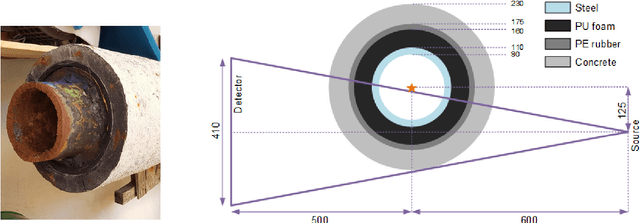
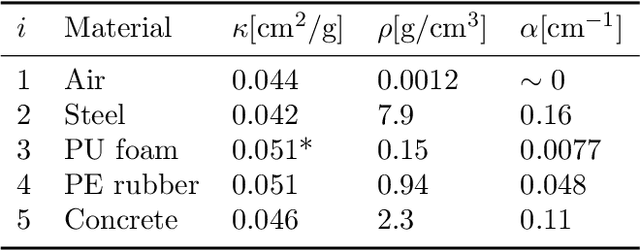
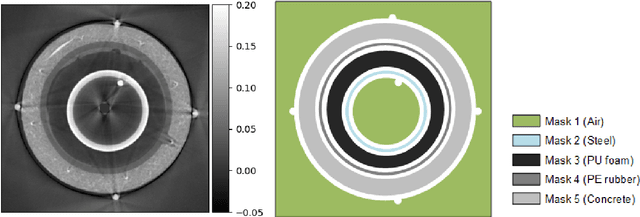
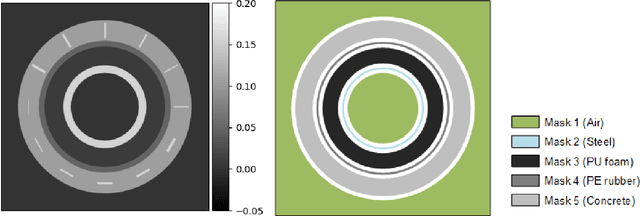
Abstract:A non-destructive testing (NDT) application of X-ray computed tomography (CT) is inspection of subsea pipes in operation via 2D cross-sectional scans. Data acquisition is time-consuming and costly due to the challenging subsea environment. Reducing the number of projections in a scan can yield time and cost savings, but compromises the reconstruction quality, if conventional reconstruction methods are used. In this work we take a Bayesian approach to CT reconstruction and focus on designing an effective prior to make use of available structural information about the pipe geometry. We propose a new class of structural Gaussian priors to enforce expected material properties in different regions of the reconstructed image based on independent Gaussian priors in combination with global regularity through a Gaussian Markov Random Field (GMRF) prior. Numerical experiments with synthetic and real data show that the proposed structural Gaussian prior can reduce artifacts and enhance contrast in the reconstruction compared to using only a global GMRF prior or no prior at all. We show how the resulting posterior distribution can be efficiently sampled even for large-scale images, which is essential for practical NDT applications.
Enhanced hyperspectral tomography for bioimaging by spatiospectral reconstruction
Mar 08, 2021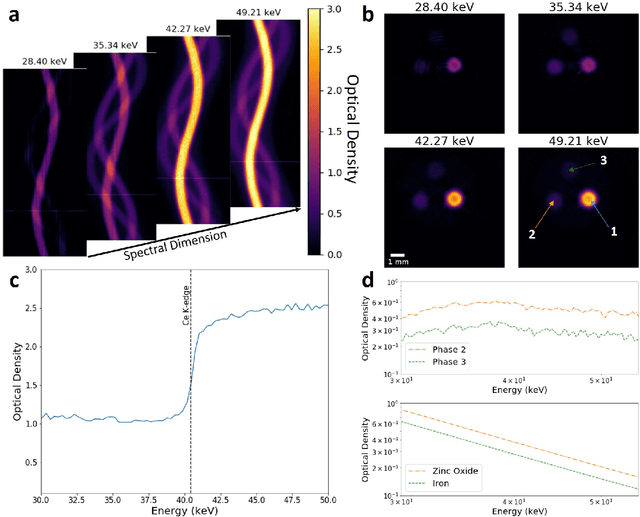
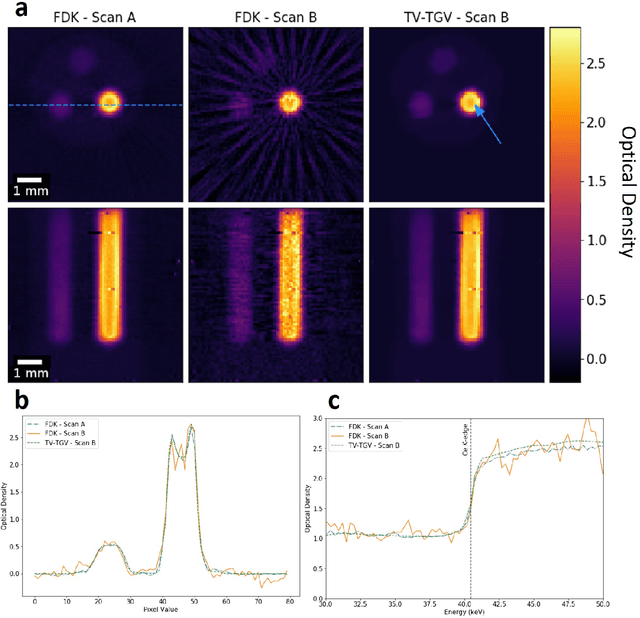
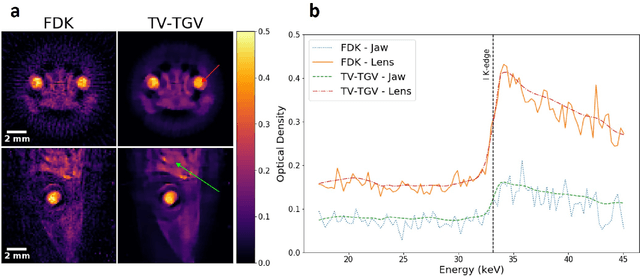
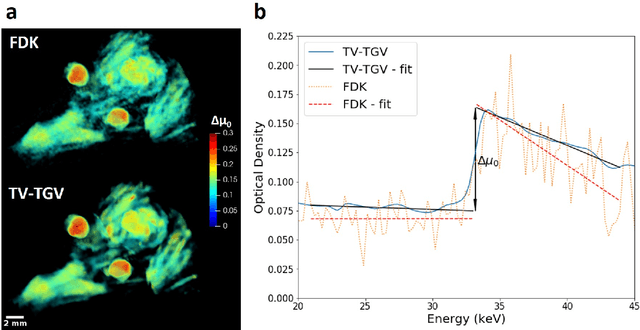
Abstract:Here we apply hyperspectral bright field imaging to collect computed tomographic images with excellent energy resolution (800 eV), applying it for the first time to map the distribution of stain in a fixed biological sample through its characteristic K-edge. Conventionally, because the photons detected at each pixel are distributed across as many as 200 energy channels, energy-selective images are characterised by low count-rates and poor signal-to-noise ratio. This means high X-ray exposures, long scan times and high doses are required to image unique spectral markers. Here, we achieve high quality energy-dispersive tomograms from low dose, noisy datasets using a dedicated iterative reconstruction algorithm. This exploits the spatial smoothness and inter-channel structural correlation in the spectral domain using two carefully chosen regularisation terms. For a multi-phase phantom, a reduction in scan time of 36 times is demonstrated. Spectral analysis methods including K-edge subtraction and absorption step-size fitting are evaluated for an ex vivo, single (iodine)-stained biological sample, where low chemical concentration and inhomogeneous distribution can affect soft tissue segmentation and visualisation. The reconstruction algorithms are available through the open-source Core Imaging Library. Taken together, these tools offer new capabilities for visualisation and elemental mapping, with promising applications for multiply-stained biological specimens.
 Add to Chrome
Add to Chrome Add to Firefox
Add to Firefox Add to Edge
Add to Edge